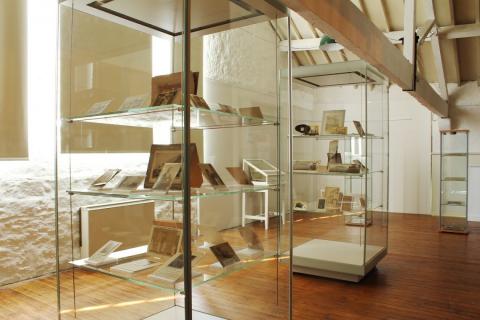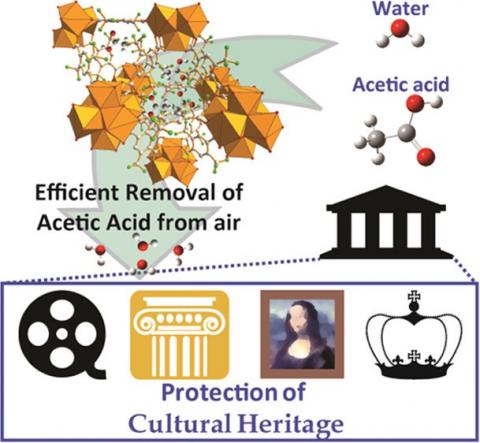
When the chemistry of materials helps to preserve heritage objects
During the IUPAC 2019 Paris congress, Kevin Dedecker, from the Institut Lavoisier de Versailles (CNRS/UVSQ), highlighted his work on MOFs (Metal Organic Frameworks) for the protection of artworks.
Museums, galleries, libraries, archive buildings are all privileged guardians of the cultural heritage of modern societies. But the conserved heritage objects stand the test of time and degrade under the influence of certain compounds in the atmosphere. Volatile organic compounds (VOCs), such as acetic acid, contribute particularly to the rapid destruction of cultural property in the presence of moisture.
There are several solutions to overcome this problem, which are already applied in collections. For example, it is possible to ventilate the place where the document is located, although it is not always easy to do this. It is also possible to isolate the object: this consists in storing the artworks in an area under controlled atmosphere. A less common approach is to adsorb VOCs into porous materials such as activated carbons or zeolites (crystalline formations composed of oxygen, silicon and aluminum). However, these adsorbents are not very effective against acetic acid, as they lack either selectivity in the presence of moisture (in the case of zeolites) or affinity for this compound (in the case of activated carbons).
Kevin Dedecker and his colleagues* are interested in a class of porous hybrid materials, the Metal Organic Framework (MOFs), which result from the assembly of metal ions bonded by organic molecules. Their "hybrid" architecture provides a controlled porosity at the nanometer scale. This porosity is easy to modulate and leads to solids with a large internal surface. These solids are capable of easily adsorbing molecules (gases, vapours). Kevin Dedecker has demonstrated that the synthesis of hydrophobic MOFs suitable for the capture of acetic acid can be achieved. In the presence of moisture, their ability and selectivity to adsorb is greater than those of commercial adsorbents (activated carbons or zeolites).
Preliminary tests are under way: researchers are evaluating the effectiveness of these MOFs once incorporated into boxes designed to preserve heritage objects or spread over surfaces. This is a new way to prevent alterations to heritage objects and significantly increase the longevity of these historical objects.

* Nathalie Steunou and Eddy Dumas of the Molecules, Interactions, Materials team at the Lavoisier Institute of Versailles (CNRS/UVSQ); Christian Serre of the Porous Materials Institute of Paris (ENS/ESPCI/PSL University).
K. Dedecker, R. S. Pillai, F. Nouar, J. Pires, N. Steunou, E. Dumas, G. Maurin, C. Serre, M. L. Pinto. Metal-Organic Frameworks for Cultural Heritage Preservation: The Case of Acetic Acid Removal. ACS Applied Materials & interfaces, (2018), 10, 13886-13894.
